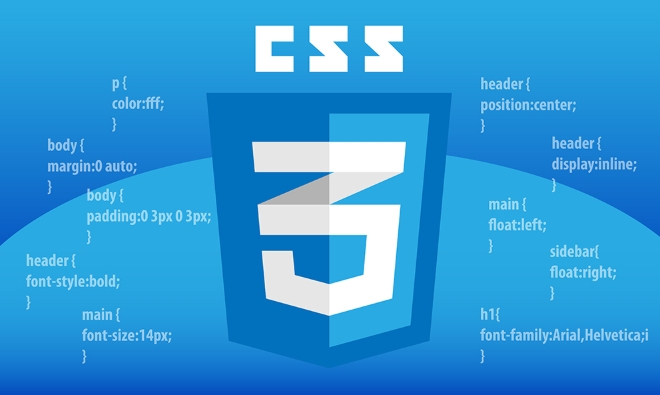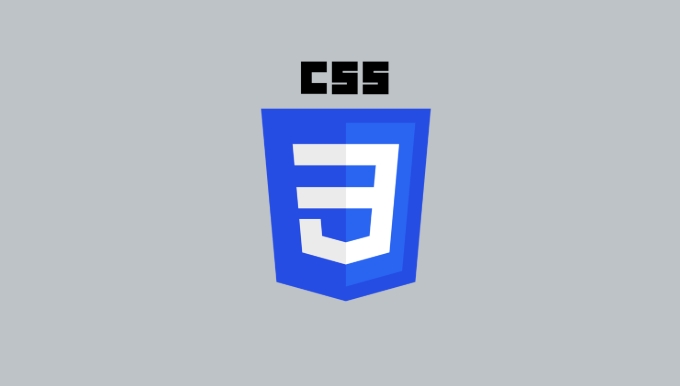backdrop-filter can enhance the hierarchy of web pages through blur and other effects, and is suitable for pop-up windows, cards and other components. 1. Use blur to achieve the frosted glass effect, such as .modal { backdrop-filter: blur(10px); background-color: rgba(255, 255, 255, 0.6); }, and it is recommended to add the -webkit- prefix to improve compatibility; 2. Combining multiple filter functions such as brightness, contrast, etc. can create a richer visual style, but pay attention to the order affecting the effect; 3. Pay attention to the impact of performance consumption, browser compatibility and hierarchy structure on display effect, and adopt a downgrade solution to ensure the consistency of the page experience.

Sometimes when you want to make web elements look more layered or have a bit of frosted glass texture, backdrop-filter comes in handy. It does not only act on its own content like ordinary filters, but can "treat" the background and make effects similar to frosted glass, blur, contrast adjustments, etc. It is especially suitable for pop-up windows, cards, and navigation bars, which require visual separation from the background.

1. Simple implementation of the blur effect
This is one of the most common uses of backdrop-filter . For example, if you want to make a translucent pop-up window but don’t want the background to be completely obscured, you can add a blur filter:

.modal {
backdrop-filter: blur(10px);
background-color: rgba(255, 255, 255, 0.6);
}In this way, the user sees the picture after the background is blurred, and at the same time, they can see the content in the pop-up window clearly. This effect performs well in mobile or modern browsers, but may not be supported in some older browsers, so you need to pay attention to compatibility.
A common practice is to add -webkit- prefix to adapt to Safari and iOS browsers:

.modal {
-webkit-backdrop-filter: blur(10px);
backdrop-filter: blur(10px);
background-color: rgba(255, 255, 255, 0.6);
}2. Use multiple filters in combination to create a richer visual style
backdrop-filter is not only blur, but also can superimpose multiple filter functions, such as brightness, contrast, grayscale, etc. You can freely combine according to your design requirements:
.card {
backdrop-filter: blur(5px) brightness(90%) contrast(120%);
}The above code means: first blur 5px, then slightly dim to enhance contrast. This will make the card look more textured and easier to "jump out" from the background.
Some commonly used filter functions include:
-
blur(px): degree of blur -
brightness(%): brightness -
contrast(%): contrast -
grayscale(%): grayscale -
saturate(%): saturate
Pay attention to the order when combining, different orders will affect the final effect. For example, blurring first and then adjusting the brightness will be different from the visual feeling of brightening first and then blurring it out.
3. Pay attention to performance and compatibility issues
Although backdrop-filter is cool, it is not omnipotent. Please pay attention to the following points when using it:
- High performance consumption : especially when a large range of blur effects is used, page scrolling may be stuttered, especially on low-end devices.
- Browser compatibility is limited : Currently, mainstream browsers support it, but old antiques like IE are not good. If the project requires compatibility with old browsers, it is best to prepare alternate styles.
- The hierarchy affects the display effect :
backdrop-filteris rendered based on the area behind the element, so the parent container cannot haveoverflow: hiddenor some cropping settings, otherwise the filter effect will not be visible.
Solution:
- The control fuzzy value should not be too large, generally 5~10px is enough
- Use only on key UIs to avoid large-scale abuse
- Add
-webkit-prefix to improve compatibility - Provide downgrade solutions for unsupported browsers, such as pure translucent backgrounds
Basically that's it. Using backdrop-filter rationally can make your web page more visually attractive and not complicated to operate. The key is not to forget to consider performance and compatibility.
The above is the detailed content of Using CSS backdrop-filter for unique effects. For more information, please follow other related articles on the PHP Chinese website!

Hot AI Tools

Undress AI Tool
Undress images for free

Undresser.AI Undress
AI-powered app for creating realistic nude photos

AI Clothes Remover
Online AI tool for removing clothes from photos.

Clothoff.io
AI clothes remover

Video Face Swap
Swap faces in any video effortlessly with our completely free AI face swap tool!

Hot Article

Hot Tools

Notepad++7.3.1
Easy-to-use and free code editor

SublimeText3 Chinese version
Chinese version, very easy to use

Zend Studio 13.0.1
Powerful PHP integrated development environment

Dreamweaver CS6
Visual web development tools

SublimeText3 Mac version
God-level code editing software (SublimeText3)
 CSS tutorial for creating loading spinners and animations
Jul 07, 2025 am 12:07 AM
CSS tutorial for creating loading spinners and animations
Jul 07, 2025 am 12:07 AM
There are three ways to create a CSS loading rotator: 1. Use the basic rotator of borders to achieve simple animation through HTML and CSS; 2. Use a custom rotator of multiple points to achieve the jump effect through different delay times; 3. Add a rotator in the button and switch classes through JavaScript to display the loading status. Each approach emphasizes the importance of design details such as color, size, accessibility and performance optimization to enhance the user experience.
 Addressing CSS Browser Compatibility issues and prefixes
Jul 07, 2025 am 01:44 AM
Addressing CSS Browser Compatibility issues and prefixes
Jul 07, 2025 am 01:44 AM
To deal with CSS browser compatibility and prefix issues, you need to understand the differences in browser support and use vendor prefixes reasonably. 1. Understand common problems such as Flexbox and Grid support, position:sticky invalid, and animation performance is different; 2. Check CanIuse confirmation feature support status; 3. Correctly use -webkit-, -moz-, -ms-, -o- and other manufacturer prefixes; 4. It is recommended to use Autoprefixer to automatically add prefixes; 5. Install PostCSS and configure browserslist to specify the target browser; 6. Automatically handle compatibility during construction; 7. Modernizr detection features can be used for old projects; 8. No need to pursue consistency of all browsers,
 What is the difference between display: inline, display: block, and display: inline-block?
Jul 11, 2025 am 03:25 AM
What is the difference between display: inline, display: block, and display: inline-block?
Jul 11, 2025 am 03:25 AM
Themaindifferencesbetweendisplay:inline,block,andinline-blockinHTML/CSSarelayoutbehavior,spaceusage,andstylingcontrol.1.Inlineelementsflowwithtext,don’tstartonnewlines,ignorewidth/height,andonlyapplyhorizontalpadding/margins—idealforinlinetextstyling
 Creating custom shapes with css clip-path
Jul 09, 2025 am 01:29 AM
Creating custom shapes with css clip-path
Jul 09, 2025 am 01:29 AM
Use the clip-path attribute of CSS to crop elements into custom shapes, such as triangles, circular notches, polygons, etc., without relying on pictures or SVGs. Its advantages include: 1. Supports a variety of basic shapes such as circle, ellipse, polygon, etc.; 2. Responsive adjustment and adaptable to mobile terminals; 3. Easy to animation, and can be combined with hover or JavaScript to achieve dynamic effects; 4. It does not affect the layout flow, and only crops the display area. Common usages are such as circular clip-path:circle (50pxatcenter) and triangle clip-path:polygon (50%0%, 100 0%, 0 0%). Notice
 Styling visited links differently with CSS
Jul 11, 2025 am 03:26 AM
Styling visited links differently with CSS
Jul 11, 2025 am 03:26 AM
Setting the style of links you have visited can improve the user experience, especially in content-intensive websites to help users navigate better. 1. Use CSS's: visited pseudo-class to define the style of the visited link, such as color changes; 2. Note that the browser only allows modification of some attributes due to privacy restrictions; 3. The color selection should be coordinated with the overall style to avoid abruptness; 4. The mobile terminal may not display this effect, and it is recommended to combine it with other visual prompts such as icon auxiliary logos.
 How to create responsive images using CSS?
Jul 15, 2025 am 01:10 AM
How to create responsive images using CSS?
Jul 15, 2025 am 01:10 AM
To create responsive images using CSS, it can be mainly achieved through the following methods: 1. Use max-width:100% and height:auto to allow the image to adapt to the container width while maintaining the proportion; 2. Use HTML's srcset and sizes attributes to intelligently load the image sources adapted to different screens; 3. Use object-fit and object-position to control image cropping and focus display. Together, these methods ensure that the images are presented clearly and beautifully on different devices.
 Demystifying CSS Units: px, em, rem, vw, vh comparisons
Jul 08, 2025 am 02:16 AM
Demystifying CSS Units: px, em, rem, vw, vh comparisons
Jul 08, 2025 am 02:16 AM
The choice of CSS units depends on design requirements and responsive requirements. 1.px is used for fixed size, suitable for precise control but lack of elasticity; 2.em is a relative unit, which is easily caused by the influence of the parent element, while rem is more stable based on the root element and is suitable for global scaling; 3.vw/vh is based on the viewport size, suitable for responsive design, but attention should be paid to the performance under extreme screens; 4. When choosing, it should be determined based on whether responsive adjustments, element hierarchy relationships and viewport dependence. Reasonable use can improve layout flexibility and maintenance.
 What are common CSS browser inconsistencies?
Jul 26, 2025 am 07:04 AM
What are common CSS browser inconsistencies?
Jul 26, 2025 am 07:04 AM
Different browsers have differences in CSS parsing, resulting in inconsistent display effects, mainly including the default style difference, box model calculation method, Flexbox and Grid layout support level, and inconsistent behavior of certain CSS attributes. 1. The default style processing is inconsistent. The solution is to use CSSReset or Normalize.css to unify the initial style; 2. The box model calculation method of the old version of IE is different. It is recommended to use box-sizing:border-box in a unified manner; 3. Flexbox and Grid perform differently in edge cases or in old versions. More tests and use Autoprefixer; 4. Some CSS attribute behaviors are inconsistent. CanIuse must be consulted and downgraded.






